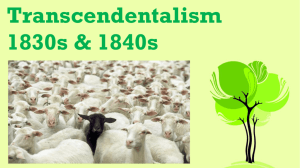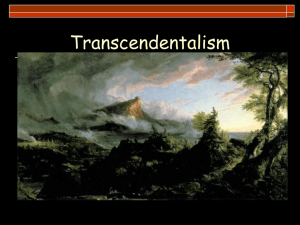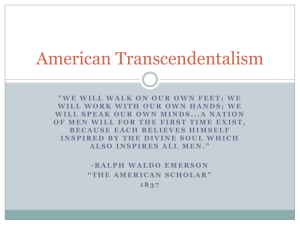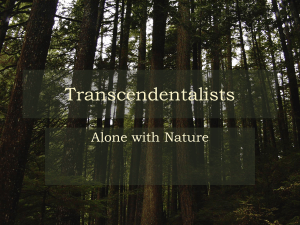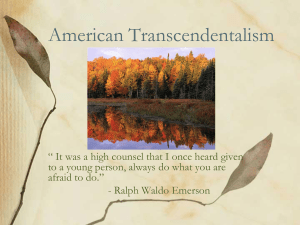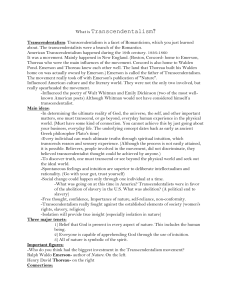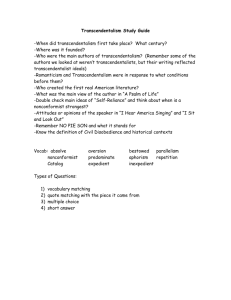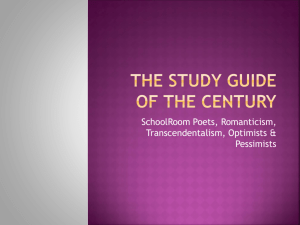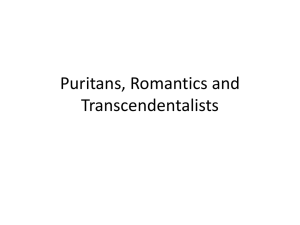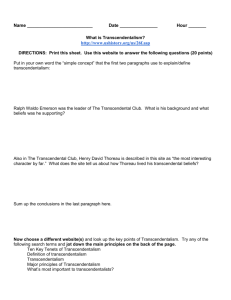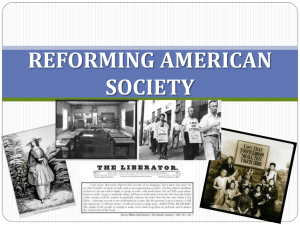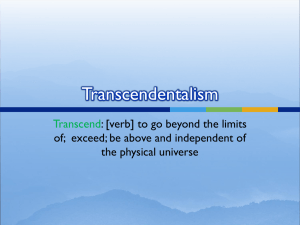THE TRANSCENDENTALISTS
advertisement
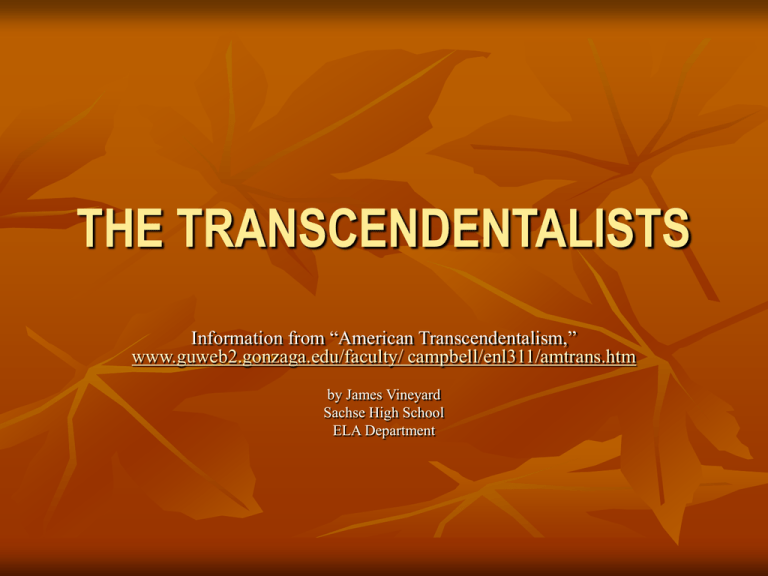
THE TRANSCENDENTALISTS Information from “American Transcendentalism,” www.guweb2.gonzaga.edu/faculty/ campbell/enl311/amtrans.htm by James Vineyard Sachse High School ELA Department WHAT IS TRANSCENDENTALISM? 1830s-1840s Philosophical movement Reflected in literature Unitarian: the soul of the individual is “identical with the soul of the world and contains what the world contains.” SOURCES OF THE MOVEMENT Reaction to Calvinism, which stated that man is essentially evil, in need of salvation, and his afterlife is predetermined Reaction to Deism: the idea that God is uninterested in the affairs of man Reaction to rationalism: the idea that all events/phenomena can be explained CHARACTERISTICS OF TRANSCENDENTALISM Perception is more important than reason Microcosm and Macrocosm: Each part of nature contains all of nature within it Nature as a symbol: all natural things represent something spiritual Universal soul or “Oversoul:” "Meantime within man is the soul of the whole; the wise silence; the universal beauty, to which every part and particle is equally related." CHARACTERISTICS OF TRANSCENDENTALISM Essentially, man is good and will aspire to do good Society causes the downfall of mankind Optimistic: good things happen because of the influence of man AUTHORS Ralph Waldo Emerson Henry David Thoreau Margaret Peabody Influenced by Transcendentalism: Walt Whitman Emily Dickinson Frederick Douglass Henry Wadsworth Longfellow FAMOUS WORKS The Dial Transcendentalist magazine/publication Edited by Emerson Nature—a book of essays by Emerson Walden—a book of reflections by Thoreau
